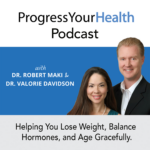
The new year is here! And I am sure everyone has their new year’s resolutions. The most common, eating better and losing weight. With the holiday season (speaking for myself), there has been way too much sugar, treats, alcohol and just too much food in general.
It has also been wonderful to spend quality time with family and loved ones, but too much wine, dessert and too little/no exercise (again, speaking for myself). I am more than ready to eat better, exercise and stop wearing yoga pants all the time.We have a program to help you (and me) eat better, feel better, lose and maintain weight. Specifically belly fat, because that is where we have all gained it. This program is called the Keto-Carb-Cycling Program (KCCP).
First off, caloric restriction is not going to work. We have all reduced our calories, suffered from hunger, cravings and being a little moody. Unfortunately, you lose a small amount of weight, which is mainly water, and muscle. Then binge and gain it all back. This program incorporates a keto diet, intermittent fasting with carbohydrate cycling. The whole point is to increase and balance your metabolic hormones. While at the same time, keeping you satiated and not restricting calories long-term.
Individually, a Ketogenic Diet, Intermittent Fasting, and Carbohydrate Cycling are very popular and do help with weight loss. However, each has its pros and cons. After working with many patients over the last 14 years, we have found that by combining the three approaches together works best. It is more healthy to our systems and maintainable over time. Finally, you can start losing weight and keep it off.
A keto-diet is reducing your total carbohydrate intake so that you go into ketosis. Usually, our bodies run by glycolysis, which is the process of utilizing carbohydrates/glucose for fuel. By reducing your carbohydrate intake below 30 grams daily, your body cannot run by glycolysis. It must switch to burning ketone bodies for fuel, which is ketosis.
When you are in ketosis, you are burning fat. So part of the KCCP is to put your body into fat-burning mode. Although, it is not ideal to be in ketosis for an extended length of time. Long-term ketosis is hard on the thyroid, can cause electrolytes/minerals deficiencies and drop neurohormones like serotonin. That is why we have combined intermittent fasting with carb-cycling to work together for weight loss, metabolism, and overall health.
Intermittent fasting (IF) is eating your meals in a 6 to an 8-hour window and fasting for 16 to 18 hours a day. Commonly IF is eating meals between noon and 8 pm. A lot of people tell me they already do this eating style, but they can’t lose weight. They skip breakfast and have lunch and dinner only. Most of the time, this pattern turns into chronic caloric restriction, which is why we recommend adding in more carbs on a strategic basis.
Carbohydrate cycling is adding starchy carbohydrate to the diet. The carb-cycling is done on a specific schedule and eaten only in the evening. A starchy carb might be a sweet potato, beans or rice. Having the carbohydrate at night will help keep neurohormones up such as serotonin and helps improve sleep quality. It also fills up your glycogen stores in your muscle and liver. Glycogen is stored glucose/sugar. By depleting the stored sugar by way of ketosis and then filling it up with carb-cycling helps balance metabolic hormones such as cortisol and insulin.
But we have found that by combining a keto-diet, IF and carb-cycling helps:
But most importantly, you can do this lifestyle program for the rest of your life. It is perfect for weight loss but also for maintaining the weight loss.
It does this in several ways.
If you are interested in downloading our Keto-Carb-Cycling-Program for free? Just go to our website: progressyourhealth.com and access our free Content Library.
The post What is Best Way to Lose Weight? | PYHP 029 appeared first on .
Discover the common and unfamiliar symptoms that you might be experiencing. Get access to cases of real women with hormonal conditions.

In this episode, we talk about hormone treatments for perimenopause and menopause. There is a vast distinction between perimenopause and menopause when it comes to treatment options. We often see women who are being treated for menopause when they are genuinely not in menopause. Meet Linda: Linda is a listener who sent us a question […]
Recently, Catherine posted a question on our website about Biest cream, and we knew this could interest our listeners. Biest is a combination of estriol and estradiol, one of the most common forms of estrogen therapy used in bio-identical hormone replacement. There are many doses, ratios, options, and methods of using Biest, so we thought […]
Welcome to the Progress Your Health Podcast! This is a podcast that helps you learn about balancing hormones, especially during perimenopause and menopause. We love hearing from our listeners. If you have a question, please visit our website and click Ask the Doctor a question. Let’s read Brigitte’s question! I have been listening and learning […]
In this episode, we talk about the difference between perimenopause and menopause. Both Dr. Maki and I (Dr. Davidson) have worked with women in perimenopause and menopause since 2004 and sometimes get a bit myopic and technical when it comes to explaining the differences. The other day, a patient of Dr Maki’s asked the question, […]
We recently got a great question from a listener and want to share it with you. This question is about a perimenopausal 51-year-old female. She is still menstruating and having confusion about her hormone testing and the hormone therapy that she is currently taking. She is experiencing some breast tenderness and irritability related to her […]
in this episode, we answered a listener’s question. We love questions from listeners. If you have a question, please visit our website and click Ask the Doctor a question. Here is the listener’s question: I have been perimenopause for at least 4 years now I am 47 and after completing a Dutch test with a […]